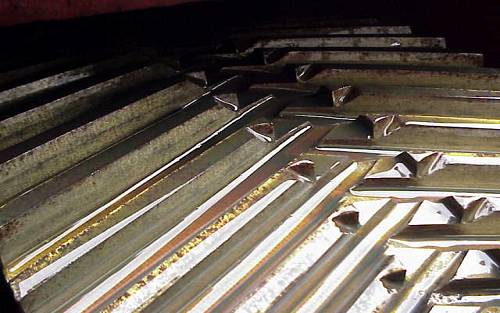 Gears used within a Falk gearbox are commonly made from hardened steel. Steels are commonly used within a gearbox reducer because they can be heat treated to increase gear strength and durability. The most common are alloy steels and oil-hardening steels, though plain carbon may also be used.
Gears used within a Falk gearbox are commonly made from hardened steel. Steels are commonly used within a gearbox reducer because they can be heat treated to increase gear strength and durability. The most common are alloy steels and oil-hardening steels, though plain carbon may also be used.
Structural components subjected to high operating stress, such as those within a Falk gearbox, need the high strength of a hardened structure in order to reduce the likelihood of gearbox repairs. Machine components such as gears usually require a hardened structure to resist wear and deformation.
Basic Gear-Hardening Procedures
The basic procedure for hardening a steel part is to heat it until the crystal structure changes at the atomic level. The part is then cooled rapidly by quenching to form a crystal structure that is much more resistant to deformation than the unhardened steel. This results in greater hardness and strength.
Tempering is done to increase the toughness of the machined part, as quenched steels are so brittle that even slight impacts may cause fracture and require costly gearbox repairs. Tempering involves reheating the part after hardening to a temperature below the hardening temperature and allowing it to cool slowly. This greatly reduces the brittleness while somewhat lowering the hardness and strength. Stress relieving is a heat treatment that may also be done to remove internal stresses from gears within a gearbox reducer.
Gears may be through-hardened, meaning the entire gear reaches the same hardness all the way through. High toughness may be obtained by hardening only the surface of the gear to a depth that provides sufficient surface hardness, while leaving the remainder in a relatively softer state. Such surface hardening also allows the use of less expensive steels and less costly heat treating methods. This process is commonly referred to as case hardening, implying that a hard outer skin or case is desired on the finished part.
Common Methods for Hardening Gears
A variety of methods can be employed to harden the gears used in a Falk gearbox. For through-hardened gears, the parts are heated in a furnace to the proper temperature and then dropped into a quench medium such as oil. For some alloy steels, the parts may be air-cooled with a stream of cool, inert gas blown over the part while it remains in the oven after the heating cycle. The gears are then tempered to final working hardness.
For surface hardening, several options are available, including:
Flame hardening. The gear is subjected to a fuel gas flame on a local section, followed by quenching. A local zone is heated to the hardening temperature and then immediately quenched as the zone moves out of the heated region. Typical depths of hardening range from 1/8 inch to full depth. Typical steels used are plain carbon, with about 0.45 percent carbon content, and low alloy steels.
Induction hardening. This method is applicable to smaller parts than can be effectively flame hardened. The gear is immersed in a quench medium such as water or oil. A coil of wire is placed around the part, and a high-current flow of electricity is passed through the coil. The part is heated to the hardening temperature by induced current flow from the coil. After approximately ten seconds, the current is turned off and the part is rapidly cooled by the surrounding quench media. Materials used are similar to alloy steels. Typical hardening depths range from 0.01 inch to full depth.
Carburizing. The gear is immersed in a hot, carbon-rich medium – such as solid particles of charcoal; a carbon-rich molten salt such as sodium cyanide; or a carbon-rich fuel gas such as carbon monoxide – for the required period of time (generally a few hours). It is then removed and transferred to a conventional heat treating process. Materials used are typically low carbon steels, with 0.1-0.3 percent carbon. The depth of hardening is usually limited to 0.050 inch or less, due to the time required for carbon to diffuse deeply into the gear.
Once hardened, gears are then inspected and shipped to the gear reducer manufacturer for installation. A Falk gearbox incorporates gears that were formed using the best combination of materials selection and hardening processes to create a cost-effective drive with a long service life for whatever purpose it was designed to handle.
Posted under Articles on Monday, October 24th, 2011
